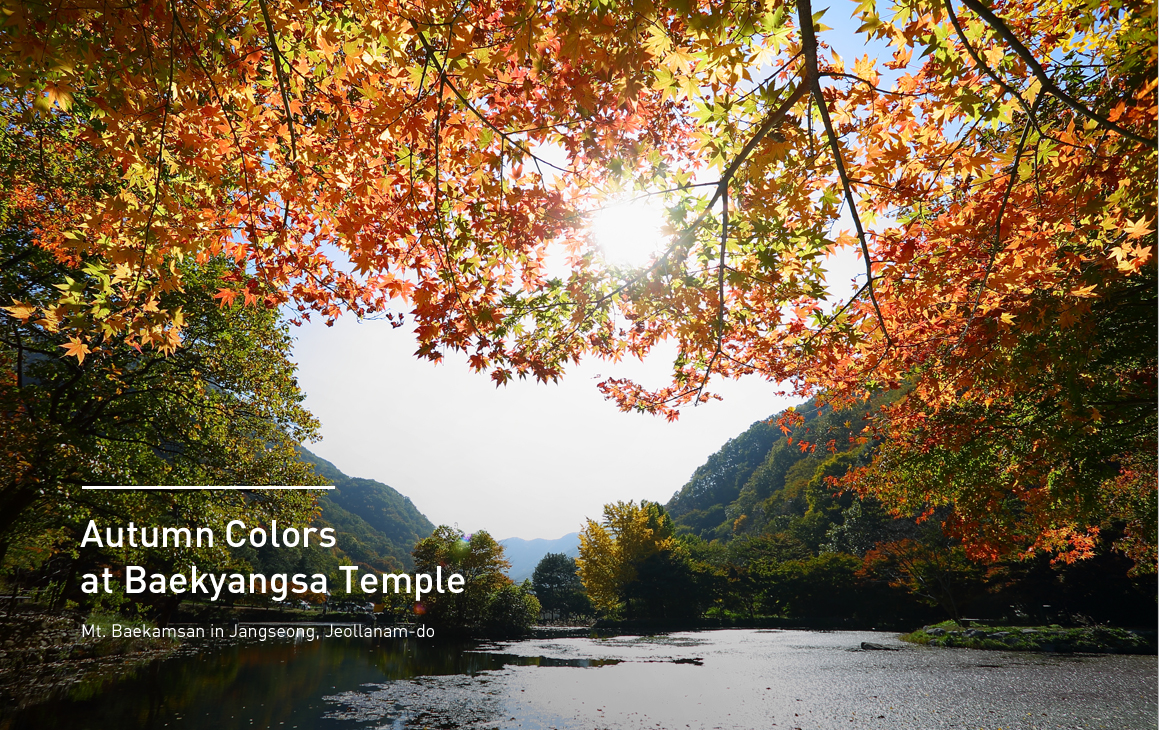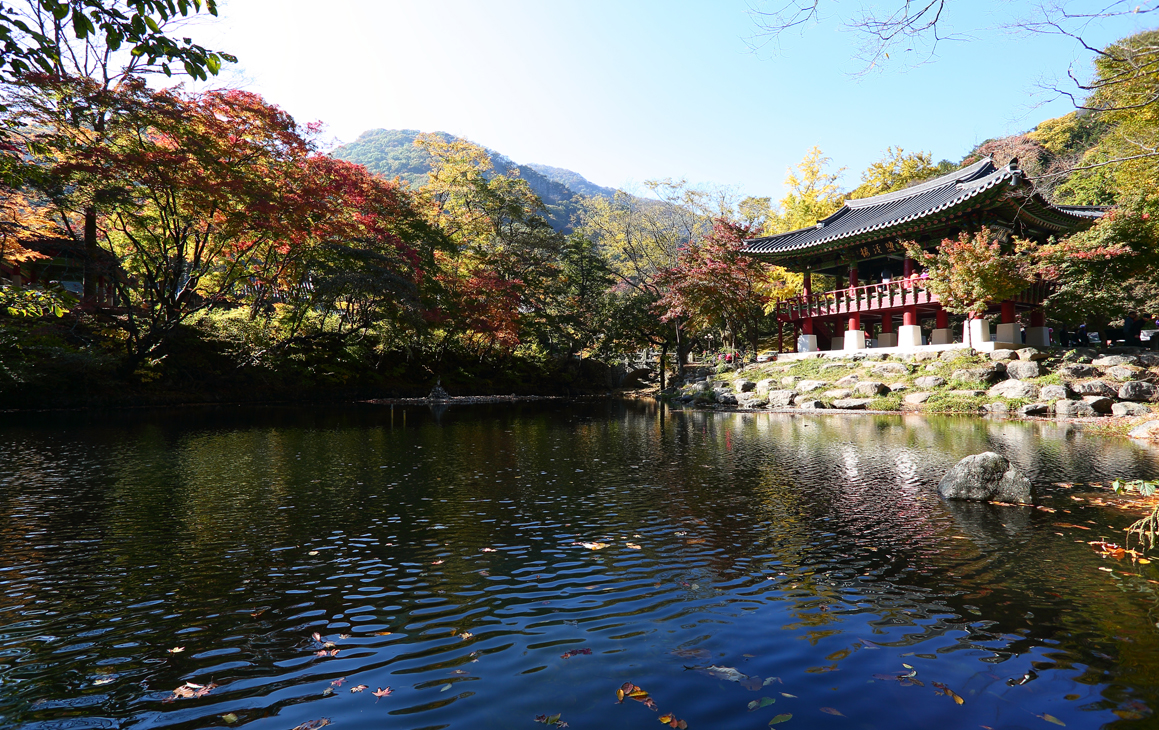

The beautiful passes quickly. So do reddened leaves in the autumn season.
When mountains begin to turn red, we head to Baekyangsa Temple to seize the passing moment.
Baby Red Leaves Welcome Visitors
Located in the southeastern part of Korea, Baekyangsa Temple is famous for beautiful colored leaves.
The leaves surrounding the temple are often called “baby leaves” due to their small size.
Befitting the name, the leaves are as tiny as a baby’s hands and as red as a baby’s cheeks.
The path from the entrance of Mt. Baekam toward Baekyangsa Temple not only has diminutive leaves,
but also oriental chestnut oaks that are more than 600 years old, adding a varied tone to the autumnal ambience.
Standing side by side as if guiding visitors, the oak trees boast thick and sturdy trunks.
Yellow ginkgo trees and trees with appetizing persimmons are also found here and there, completing the colorful autumn scene.
At the entrance of the temple, we spotted a pavilion.
Ssanggyeru is situated at a point two valleys join on both sides against the backdrop of Mt. Baekam enveloping the temple.
Baekhakbong Peak and small red leaves reflected in the valleys look like a landscape painted by Mother Nature.
Passing by the pavilion, we were welcomed by a zelkova tree.
“This tree is a shrine to the village deity,” explains Go Gwang-chun, a cultural heritage guide, describing how a shrine was built within the temple.
“We don’t usually think shrines go with Buddhism because they belong to folk religion, but Baekyangsa made this shrine to harmonize with the villagers.”

A Historical Temple Standing over a Millennium
A historical temple founded during the time of King Mu of Baekje over 1,400 years ago,
Baekyangsa was originally called Baekamsa.
The temple was renamed Jeongtosa during the Goryeo Dynasty, and then finally to the current name
during the era of King Seonjo of Joseon, which involves an interesting anecdote.
“A high priest held a Buddhist ceremony. And a white lamb came down from Mt. Baekam and
ardently listened to his preaching before disappearing into the mountain after the ceremony.
After the seven-day ceremony, the white lamb appeared in the priest’s dream
and said, ‘I committed a sin in paradise and was born as an animal.
Now that I listened to your sermon, I am now able to go to heaven again.
'The white lamb politely bowed to the priest and disappeared.
The next morning, the priest stepped out onto the yard and found a dead white lamb.
Since then, this temple has been called Baekyangsa(literally meaning ‘White Lamb Temple’)
as the white lamb attained Nirvana in this place.”
A pagoda is typically erected in front of the main worship hall at most Korean temples,
but rather unusually no pagoda is to be seen in these premises. Asked about the reason, the guide responds,
“Mt. Baekam has a highly strong spirit. The spirit was so strong in the past that people praying inside this temple all eventually ran away.
So, to block the spirit from the mountain, the eight-story pagoda was built behind the main temple.”

Abundance Brought by the Autumn Season
Situated at the entrance to the temple, Hakbong Seonseokwon is the temple’s first exhibition hall for suiseki,
or “viewing stones,” collected for the past four decades by Monk Jiseon, the chief priest.
Over 1,000 pieces of stones resembling a man in deep contemplation were donated
by others or collected by Monk Jiseon himself not only in Korea, including the areas around Namhan River, Hantan River,
and Seomjin River, and Jeju and Geoje Islands, but also in over ten foreign countries including the United States, China, Japan, Myanmar,
Nepal, and Papua New Guinea. Each of the displayed stones showcases a range of mysterious patterns carved by nature.
Leaving the temple after absorbing the clear spirit, we stopped by to taste a sweet persimmon,
the famous specialty of Jangseong with high sugar content.
Jangseong is known for the red baby leaves around Baekyangsa Temple and also for sweet,
large persimmons. Stepping outside the temple’s entrance, it is easy to spot farmers busy harvesting persimmons.
Another notable sight is persimmons hung everywhere across the village to be dried.
The clean air provided by the deep forest console our mind, and the sweet persimmons taste the abundance of the autumn season.
They are indeed a seasonal present. When autumn arrives each year, we recall this beautiful place where baby leaves welcome us.















